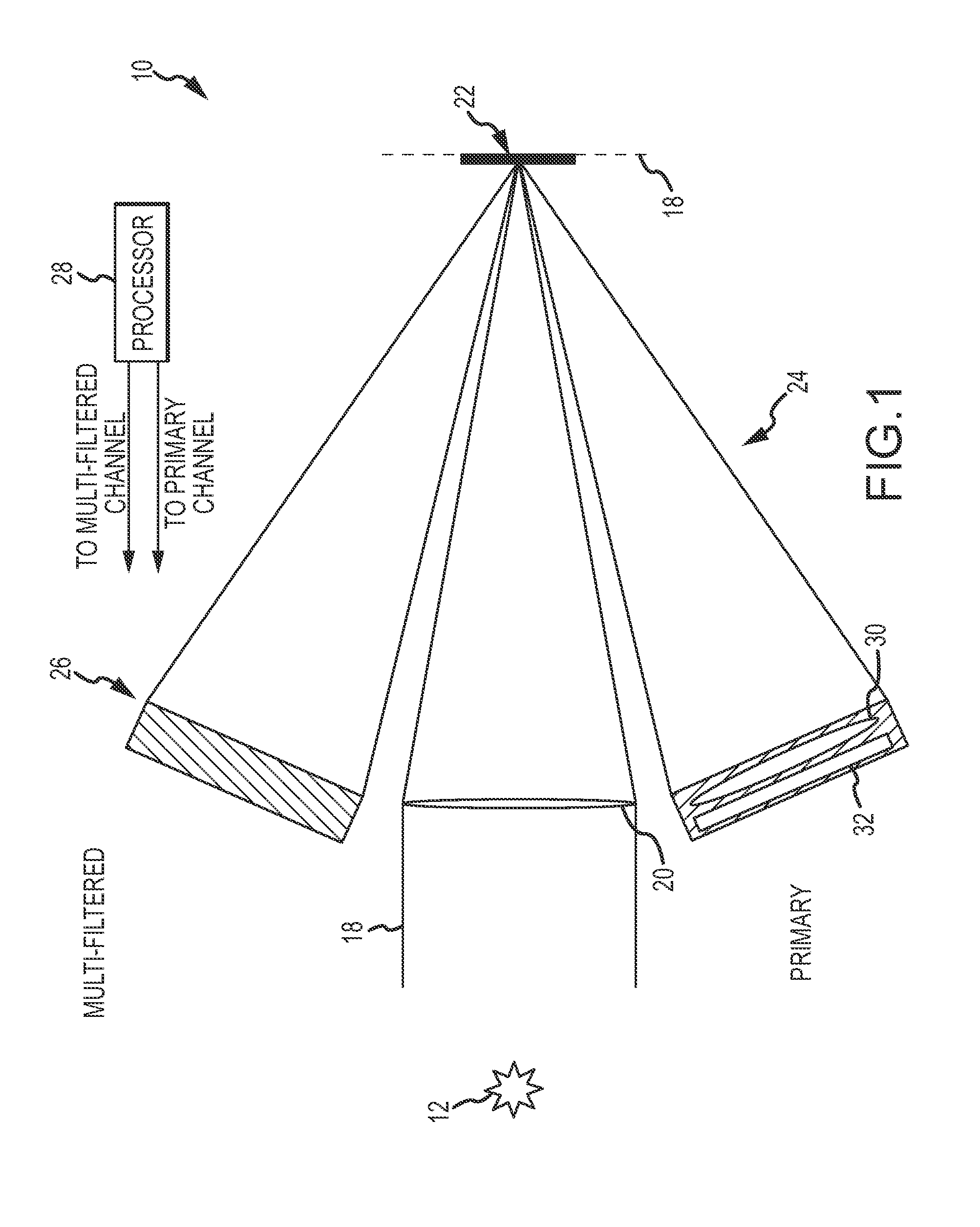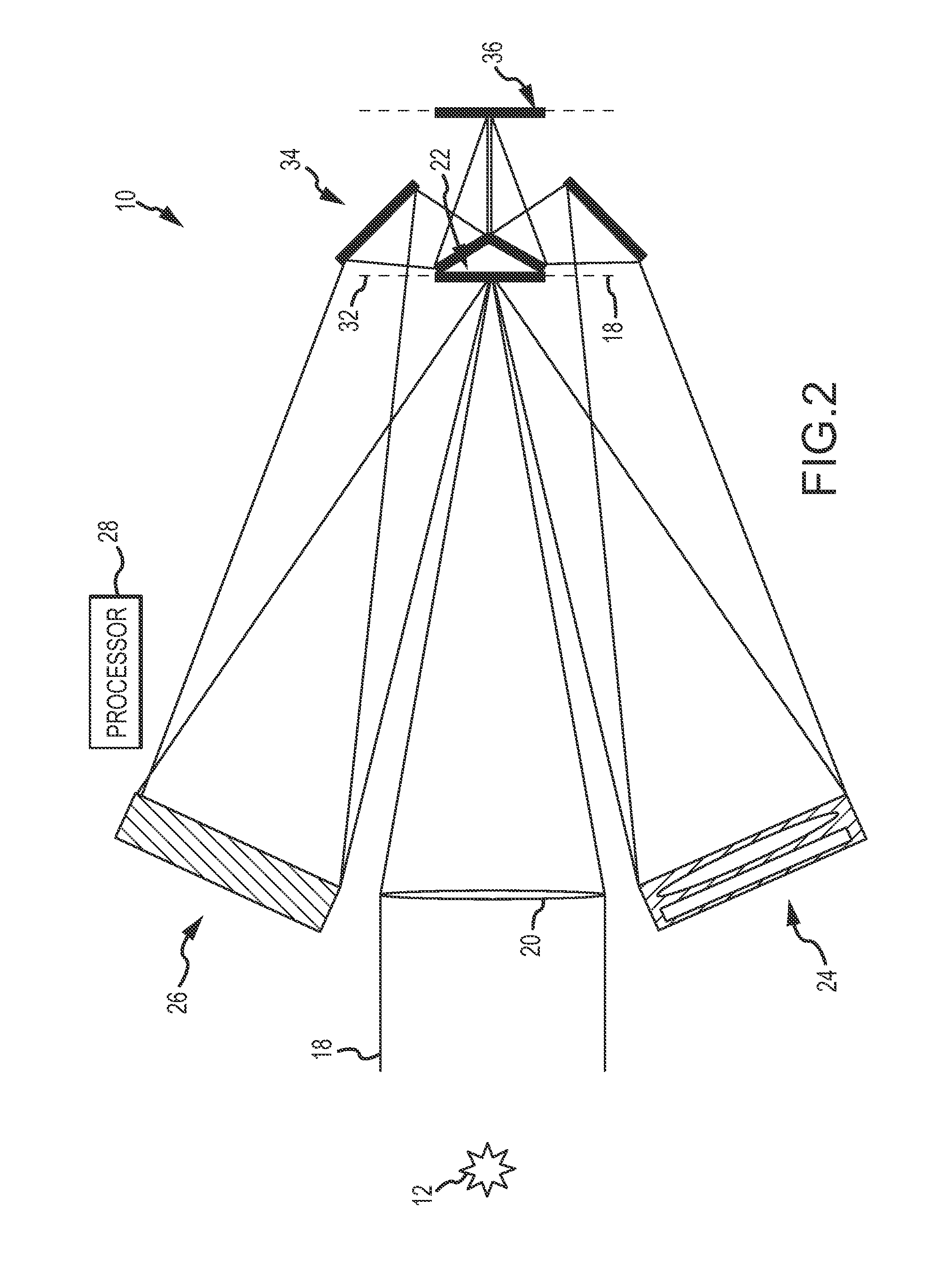Time-multiplexed broadband and multi-filtered electro-optic sensor
a multi-filtered electro-optic and broadband technology, applied in the field of electro-optic sensors, can solve the problems of inability to accurately detect the target at long ranges,
- Summary
- Abstract
- Description
- Claims
- Application Information
AI Technical Summary
Benefits of technology
Problems solved by technology
Method used
Image
Examples
case 1
[0064]Assume a 20×20 pixel detector that is divided into 4 10×10 sub-regions to detect 4 filtered sub-channels. Consider a field directing array having 100×φtilt cells with each cell including four optical tilt elements. A light modulator has 400×400 addressable elements. Each light modulator element is mapped to a single optical tilt element. 10×10 optical tilt elements, hence 10×10 portions of the FOV are mapped to and overlap each detector pixel. The light modulator is addressed to serial scan each addressable element, hence each optical tilt element in a 10×10 block to map a single portion of the FOV onto a given detector pixel during an integration period. By stitching the electrical signals together the 20×20 pixel detector can produce 100×100 pixel images for each of the four filtered sub-channels.
case 2
[0065]Assume a 20×20 pixel detector that is divided into 4 10×10 sub-regions to detect 4 filtered sub-channels. Consider a field directing array having 50×50 tilt cells with each cell including four optical tilt elements. A light modulator has 400×400 addressable elements such that 10×10 portions of the FOV are mapped to and overlap each detector pixel. A 2×2 block of addressable elements is mapped to each optical tilt element and in turn 5×5 blocks of tilt elements are mapped to and overlap each detector pixel. The light modulator is addressed to serial scan each addressable element in the 2×2 blocks mapped to each optical tilt element and the 5×5 blocks of optical tilt elements to map a single portion of the FOV onto a given detector pixel during an integration period. By stitching the electrical signals together the 20×20 pixel detector can produce 100×100 pixel images for each of the four filtered sub-channels.
[0066]Comparing Cases 1 and 2, the time required to scan the full fil...
PUM
 Login to View More
Login to View More Abstract
Description
Claims
Application Information
 Login to View More
Login to View More - R&D
- Intellectual Property
- Life Sciences
- Materials
- Tech Scout
- Unparalleled Data Quality
- Higher Quality Content
- 60% Fewer Hallucinations
Browse by: Latest US Patents, China's latest patents, Technical Efficacy Thesaurus, Application Domain, Technology Topic, Popular Technical Reports.
© 2025 PatSnap. All rights reserved.Legal|Privacy policy|Modern Slavery Act Transparency Statement|Sitemap|About US| Contact US: help@patsnap.com



